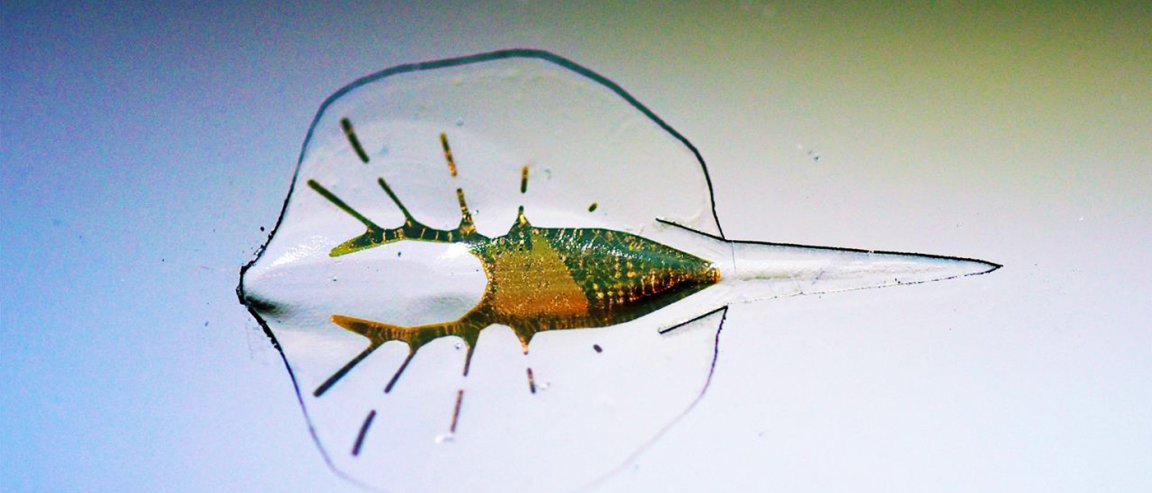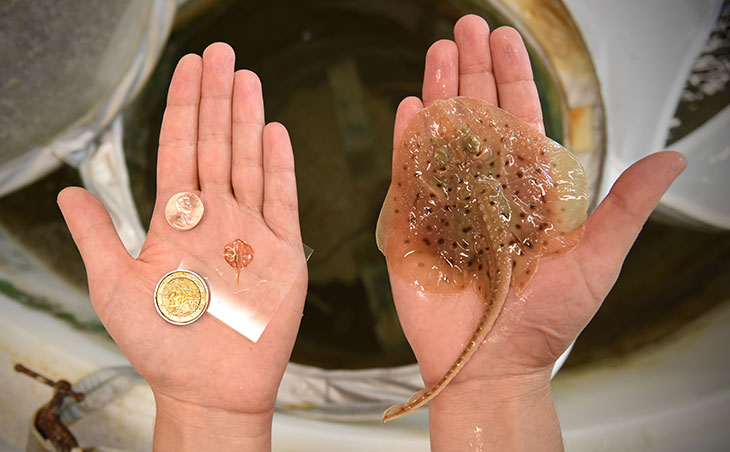
A Soft, Biohybrid Robot

Researchers from Harvard University have created a robotic stingray, implanted with living heart cells from mice that command it to swim towards the direction of light pulses, allowing it to be steered with light through water.
Unlike most robots which are made of hard metal or plastic, the stingray bot is soft: its body is made of layers of silicone, coated with around 200,000 heart cells from mice that have been genetically engineered to contract when hit with pulses of blue light. It uses also a gold skeleton to store energy.
Creator Kevin Kit Parker built a robotic jellyfish with silicone and heart muscle cells in 2012, but that one could only keep itself afloat. This is the first bot that moves (and turns left or right) towards light has ever been created.
The stingray bot is about the size of a penny and its light-sensitive heart cells prompts its fins to flutter when stimulated with light. Parker says the bot’s light-following aspect was inspired by how he used to guide his own daughter down a path using a laser pointer, which she tries to stomp on.
Watch this video to learn more about this wonderful biohybrid.

Where is this leading to?

Parker is a bioengineering professor and he didn’t just craft this living robot because it’s cool and fun: he wants to build a human heart. And the mechanisms that enable this bot to do what it does can very well be a giant leap towards making his dream of creating living artificial hearts a reality.
The bodies of jellyfish and stingrays are muscular pumps designed to move fluids, much like a human heart.
“Some engineers build things out of aluminum. I build things out of cells — and I need to practice,” he says. “So I practice building pumps.”
Parker thinks the invention could be developed for biomedical purposes, such as heart replacements for children born with malformed hearts. Apart from this, University of Illinois at Urbana-Champaign bioengineer Rashid Bashir—whose marvelous work on optogenetic biological robots we also covered, thinks it can also be programmed for other purposes such as environmental cleanup—sucking in toxins from water.
While the work is still in its infancy stage, it certainly is a groundbreaking innovation—one worth watching unfold over the next years to come.